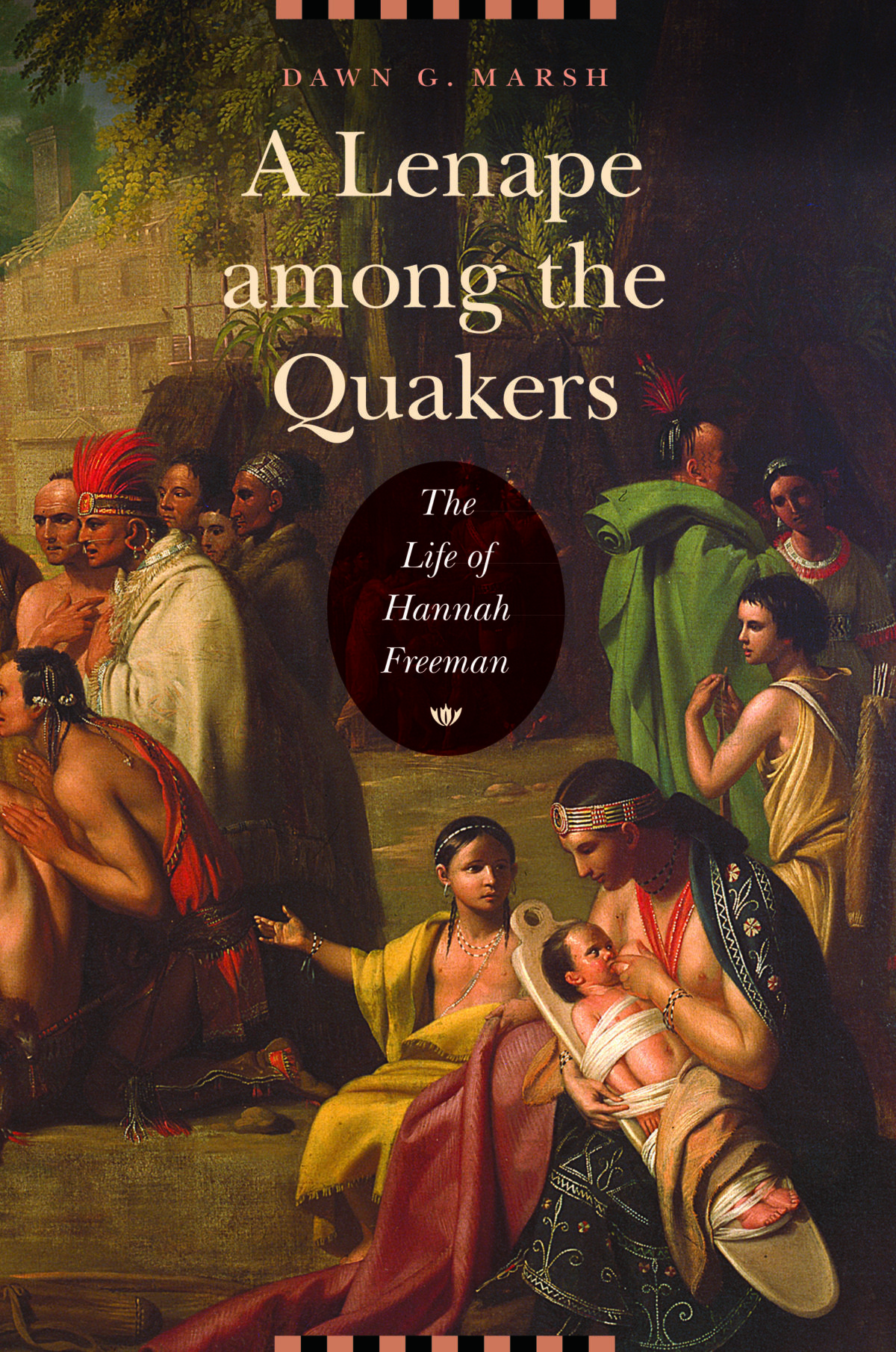One of the things about living abroad is that you end up feeling more like you’re from a particular place than you did when you lived at home. Maybe it has something to do with the desire to distinguish yourself from other people from the US, maybe it’s homesickness, maybe it’s a lot of things.
Whatever the reason, I’ve found that living in Stockholm has made me interested in filling in the gaps of my local history. The biggest gap is probably where the Lenape are concerned, so my reading started there. A reference to Hannah Freeman, or “Indian Hannah,” came up along the way and that’s how A Lenape Among the Quakers: The Life of Hannah Freeman ended up on my TBR.
The title (A Lenape Among the Quakers) and the subtitle (The Life of Hannah Freeman) pretty aptly describe the two parts and goals of the book. Author Dawn G. Marsh sketches out the events of Hannah Freeman’s life, interweaving it with the evolving (or maybe more accurately, deteriorating) relationship between Pennsylvania and the Lenape. Marsh is a professor of history at Purdue University, but the book is popular history written for a lay audience rather than a scholarly text. Still, it includes footnotes, a bibliography, and a small appendix with relevant historical documents, so there are avenues there for curious readers.
The framing device of Freeman’s life is a great way to examine standard fare Pennsylvania history from another perspective and level some well-deserved criticism. In terms of A Lenape Among the Quakers, the book is pretty solid. The benevolence and moral authority of Pennsylvania’s Quaker settlers compared to some of the other colonies is part of the commonwealth’s identity and mythos; pointing out that they weren’t cutting fair deals with their Lenape neighbors, even when William Penn was still alive, is a bitter and necessary pill to swallow.
When it comes to The Life of Hannah Freeman, however, the book deflates. In the absence of a robust historical record, Marsh hypothesizes about what life might have looked like for Freeman and speculates on how she might have thought or felt about particular events. While these suppositions are always clearly marked as such, and based in fairly reasonable historical assessment, it still feels like a stretch. On the one hand it’s important to be reminded of the human face of history, but in the absence of anything like journal accounts or other primary sources it’s pretty slim pickings. Black Tudors, which is a similar project in structure with even scantier primary sources, nonetheless engaged in far fewer creative exercises. However, Kaufmann had the advantage of ten biographies to include in the book rather than just one; there was enough material for a book without too much creative license.
And while Marsh is justified in criticizing the myth-making of Hannah Freeman by Chester County residents and Pennsylvania historians, it’s not clear that what Marsh is doing in this book is necessarily anything different. The last chapter focuses on Hannah Freeman’s memorial in Chester County and the public pomp and circumstance surrounding it in two different ceremonies (the first one in the early 1900s and the second one around a hundred years later). The memorial boulder, Marsh points out, isn’t even where Freeman is (most likely) buried. And the dedication events both times around were, let’s say, clunky. The original ceremony had a lot of romanticizing of “the Indian,” with poetry and dramatic reenactments based on the “noble savage” stereotype; the re-dedication ceremony in 2009 included a smudging ceremony carried out by a member of the Cherokee, rather than Lenape, nation. (I don’t know enough to know whether smudging is even part of Lenape spiritual or religious practice.) Marsh criticizes both of these as events that miss the point and that flatten Hannah Freeman into a symbol to serve a myth-making narrative instead of treating her as a complex human being.
Yet Marsh herself has spent all of the rest of the book “[moving] Native American women’s history away from a narrative of loss and victimization toward a framework of resistance and adaptation.” It’s one thing to invite readers to reflect on what this moment may have meant or felt like for a human fellow traveler—it might not have value as reportage of historical fact, but it does have value in reaffirming the complex humanity of historical figures to readers who usually just think of them as names and maybe a handful of pertinent facts. It’s also one thing to recognize the biases inherent in the available historical record and seek to correct them or at least adjust for them in your interpretations. But it’s another thing to set out on a project with the goal of elevating a historical figure to a symbol of resilience and entrepreneurship. It still reads like the same symbol- and myth-making Marsh comes to condemn in the memorial dedication ceremonies.
It’s a fine line to tow, in the end. If you want to write a biography of someone like Hannah Freeman, you know from the beginning that much of the scraps of primary sources you have will be biased against your subject, maybe even outright hostile to them. On one level because of their gender, and then an additional level because of their race. As a result, these firsthand accounts need to be taken with a grain of salt. But it seems like Marsh set out to write the The Life of Hannah Freeman portion of the book to justify her own opinion rather than chronicle a life.

